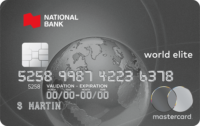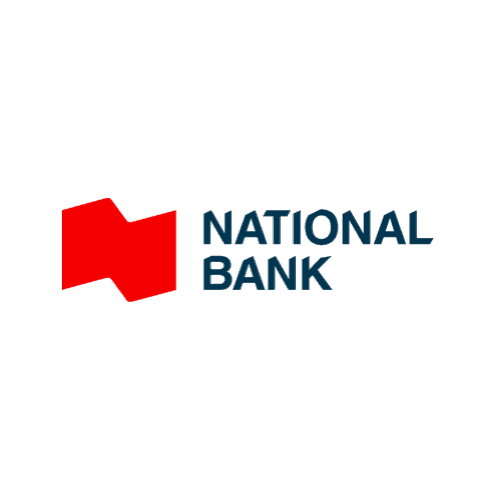Since 2023, a new tax-free savings account has been introduced in Canada to help Canadians access the real estate market. The First Home Savings Account (FHSA) has been available in Canada since April 1, 2023. In this practical guide, we explain everything you need to know about this new savings plan. In particular, how it works, eligibility criteria, contribution room, tax deductions, tax-free withdrawals and eligible investments.
How FHSA works
The First Home Savings Account (FHSA) is a new savings plan that allows eligible first-time home buyers to save tax-free.
But FHSA offers much more… It allows tax-deductible contributions like RRSPs and tax-free withdrawals like TFSAs.
In addition, FHSA withdrawals are not limited to a fixed amount like the HBP ($35,000). In fact, although the FHSA account has a lifetime contribution limit of $40,000, the entire FHSA account balance (contributions and returns) can be used to purchase a first qualifying home. Which is a huge advantage.
For example, a taxpayer who invests $8,000 a year in his FHSA and earns an average annual return of 5% will have accumulated $46,415 after 5 years. If he waits 15 years (the maximum holding period) before using his FHSA, he will have accumulated $75,606… which he can withdraw tax-free for the purchase of his first qualifying home.
In short, here are the key elements of FHSA:
- Objective: tax-sheltered savings for the purchase of a first home.
- Contribution room: $8,000 per year, for a lifetime maximum of $40,000.
- Tax deductions: contributions are tax deductible for the current year.
- Withdrawals: Withdrawals are tax-free for the purchase of a first eligible property.
Opening an FHSA
To open a FFirst Home Savings Account (FHSA), you must meet the following requirements:
- Be a Canadian resident
- Be at least 18 years old*.
- Must not be over 71 years of age on December 31 of the current year
- Be a first-time home buyer**.
* In some Canadian provinces and territories, the legal age for entering into a contract is 19. This includes, of course, opening an FHSA account.
** To qualify as a first-time home buyer, you must not have owned or co-owned a principal residence (owned by you or your spouse/common-law partner) during the current calendar year or at any time during the previous four calendar years.
You can open more than one FHSA. However, the total amount you contribute to your FHSA or transfer from your RRSP must not exceed your contribution room for the current year (see “FHSA contribution room”).
Closing an FHSA
Your FHSA must be closed by December 31 of the year in which the first of the following events occurs:
- 15th anniversary of the opening of your first FHSA (maximum participation period)
- The year you turn 71 years old
- The year following your first eligible FHSA withdrawal
Note that you must close all your FHSA accounts before the end of your maximum participation period to avoid tax consequences. If you have unused contributions in your FHSA, you can transfer them to your RRSP or RRIF tax-free. Otherwise, withdrawals will be taxable in the current year.
FHSA contribution room
FHSA contribution room is $8,000 per year, for a lifetime maximum of $40,000.
Unused contribution room can be carried forward into the future (until the FHSA is closed). However, two rules apply:
- Unused contribution room accumulates from the time you open your FHSA. Unlike the TFSA, where unused contribution room accumulates from age 18.
- The catch-up of unused contribution rights is limited to one contribution year at a time. In other words, you can contribute a maximum of $16,000 per year to the FHSA, including $8,000 for the current year and $8,000 for a one-year catch-up.
FHSA tax deductions
As with an RRSP, your contributions to the First Home Savings Account (FHSA) are tax-deductible for the current year.
For example, if you contribute $8,000 to your FHSA in 2023, your taxable income for 2023 will be reduced by the same amount. With a marginal tax rate of 36%, you’ll get a tax refund of $2,880. This tax refund can be used as you see fit… including for a new FHSA contribution.
Finally, unlike an RRSP, your contributions made during the first 60 days of the year are not tax-deductible for the previous taxation year.
Withdrawals from the FHSA
FHSA withdrawals are not taxable if used to purchase or build a first qualifying property.
Unlike the HBP/RRSP, FHSA contributions can be used immediately to purchase a qualifying first home.
As previously mentioned, the FHSA must be closed by December 31 of the year following your first eligible withdrawal. If you have unused contributions in your FHSA, you can transfer them directly to your RRSP or RRIF (registered retirement income fund).
If you withdraw the remaining amounts as a taxable withdrawal, they will be included as income on your income tax return for the current year. You’ll have to pay tax accordingly.
RRSP to FHSA rollover
Funds held in a Registered Retirement Savings Plan(RRSP) can be transferred to your FHSA, as long as the amount is within your FHSA contribution room.
Of course, you will not be entitled to a new tax deduction. However, this transfer allows you to make a tax-free withdrawal without having to pay it back (unlike an RRSP).
Conversely, if you don’t use all or part of your FHSA, the funds can be transferred to your RRSP tax-free.
FHSA-eligible investments
Like the RRSP and TFSA, the FHSA is not an investment. It’s more like a savings account in which you can invest.
There are many eligible investments in the FHSA:
- Mutual funds (FCP)
- Exchange Traded Funds (ETFs)
- Guaranteed Investment Certificates (GICs)
- Stocks
- Government or corporate obligations
- Asset allocation ETFs
- Money market
- Etc.
These types of investments are offered through an FHSA issuer, such as a financial institution, chartered bank, credit union, trust company or insurance company.
Penalty for excess contributions
If the total of your contributions and transfers to your FHSA accounts exceeds your FHSA contribution room in a given year, you will have an excess amount.
You must pay a tax of 1% per month on excess contributions to your FHSA.
To eliminate excess FHSA contributions, you can do one of the following:
- Withdraw excess funds from your FHSA account
- Transfer excess FHSA contribution directly to your RRSP or RRIF
- Make a taxable withdrawal from your FHSA (the amount withdrawn must be included as income on your tax return).
Finally, you can wait until your excess contribution room is eliminated by your new FHSA contribution room on January 1 of the following year.

Spousal FHSA
Unlike RRSPs, it is not possible to participate in your spouse’s FHSA. Your common-law partner/spouse is the only person authorized to open his or her own FHSA and claim tax deductions for FHSA contributions.
Difference between FHSA and HBP
The FHSA (First Home Savings Account) and the HBP (Home Buyers’ Plan) are two registered plans designed tohelp Canadians enter the real estate market.
The FHSA allows you to save up to $40,000 tax-free. FHSA balances, including returns, can be withdrawn tax-free for the purchase of a first qualifying property.
The HBP is a program that allows you to withdraw up to $35,000 from your RRSPs to buy or build a qualifying home. However, the amount withdrawn must be repaid (to yourself) over a 15-year period beginning two years after the year in which the funds were withdrawn from your RRSPs.
That said, the FHSA and HBP can be combined for the purchase of a qualifying first home. That’s quite a sum: $40,000 (plus returns) from the FHSA and $35,000 from the HBP (RRSP), for a total of $75,000. For a couple, the figure doubles to $150,000.
Strategy for choosing between FHSA, TFSA and RRSP
Ideally, all registered savings plans should be maximized: FHSA, TFSA, RRSP, RESP, etc. However, it is difficult for the majority of Canadian taxpayers to do so, considering the contribution limits:
- FHSA: $8,000
- TFSA: $6,500 (2023)
- RRSP: $30,780 (2023) or 18% of previous year’s income (whichever is less)
- RESP: $2,500
- Total: $47,780
As a result, the optimal strategy for choosing between different savings accounts (or a mix of them) differs from person to person. The strategy depends on personal and financial situation, as well as financial objectives.
Don’t hesitate to consult a financial professional for a strategy tailored to your situation and objectives.
The FHSA and non-residents
The First Home Savings Account (FHSA) is available to Canadian residents only. So, if you’re not a Canadian resident, you can’t open a FHSA.
Note that if you become a non-resident of Canada after opening a FHSA account, you can continue to participate. However, you will not be able to make a withdrawal for the purchase of a first qualifying property as long as you are a non-resident. In addition, if you make a taxable withdrawal, withholding tax will be deducted at the source.
Bottom Line
In short, the FHSA is undoubtedly Canada’s most powerful tax tool. It combines the advantages of both RRSPs and TFSAs, including tax-deductible contributions and tax-free withdrawals.
For Canadian residents wishing to enter the real estate market, the FHSA is a considerable asset and an opportunity not to be missed.
For more information, consult the Canada Revenue Agency (CRA) website or a financial professional.
Frequently asked questions about FHSA
Here are answers to the most frequently asked questions about the First Home Savings Account (FHSA).
What is an FHSA in Canada?
In 2023, a new tax-free savings account was introduced in Canada to help Canadians access the real estate market: the First Home Savings Account (FHSA). It allows first-time home buyers to save up to $40,000 tax-free.
Who can have a FHSA?
Canadian residents 18 years of age or older who are eligible first-time home buyers can open an FHSA account.
Is the FHSA available?
The FHSA has been available in Canada since April 1, 2023. However, not all financial institutions currently offer the FHSA. Check with your bank or credit union to see if this new registered savings plan is available.
How do I open an FHSA?
To open an FHSA, you choose an FHSA issuer, such as a financial institution, chartered bank, credit union, trust company or insurance company. Once your FHSA account is opened, you can invest in eligible investments such as mutual funds, exchange-traded funds, guaranteed investment certificates, stocks and government or corporate bonds.
How does FHSA contribution room work?
FHSA contribution room is $8,000 per year, for a lifetime maximum of $40,000. In addition, unused contribution room can be carried forward into the future (until the FHSA is closed).
How do FHSA withdrawals work?
FHSA withdrawals are not taxable if used to purchase or build a first qualifying property. Unlike the HBP (RRSP), FHSA contributions can be used immediately to purchase a first qualifying property.
What's the difference between an RRSP and a FHSA?
The RRSP and the FHSA are two different registered savings plans. The Registered Retirement Savings Plan(RRSP) is an account for saving for retirement. In addition, RRSPs can be used to purchase a first home (HBP) or to finance a return to school (LLP), under certain conditions. For more information, consult the following article: “ The Registered Retirement Savings Plan (RRSP): Everything you need to know “. The FHSA is an account designed to help Canadians enter the real estate market. It offers tax-sheltered savings of up to $40,000, a tax deduction and tax-free withdrawals for the purchase of a first qualifying property.
What's the difference between a TFSA and a FHSA?
TFSAs and FHSA are two different registered savings plans. The Tax-Free Savings Account(TFSA) is a tax-sheltered savings account. Contributions are not tax-deductible, but withdrawals are tax-free, whatever the reason (house, car, trip, etc.). The contribution limit varies from year to year, but is $6,500 for 2023. For more information, see “ The Tax-Free Savings Account (TFSA): Everything you need to know “.
What's the difference between FHSA and HBP?
The FHSA and HBP are two registered plans designed to help Canadians enter the real estate market. The FHSA allows you to save up to $40,000 tax-free for the purchase of a qualifying first home. The HBP allows you to withdraw up to $35,000 from your RRSPs to purchase a qualifying home. However, the amount withdrawn from your RRSPs must be repaid over a 15-year period. Note that the FHSA and HBP can be combined for the purchase of a first qualifying home.
Which bank offers the FHSA?
At present, not all banks offer the FHSA. However, the following financial institutions offer the FHSA:
- National Bank of Canada
- Royal Bank of Canada
- Scotiabank
- Toronto-Dominion Bank (TD Bank)
- Desjardins
- Épargne Placements Québec
- Questrade
- Wealthsimple
What is the maximum FHSA contribution in 2023?
The maximum FHSA contribution in 2023 is $8,000. Unused contribution room in 2023 can be carried forward into the future.
How do I invest in an FHSA?
To invest in an FHSA, you must open an FHSA account with an FHSA issuer. Then, you can invest in eligible investments such as mutual funds (MFs), exchange-traded funds (ETFs), guaranteed investment certificates (GICs), stocks and government or corporate bonds.
Where can I find information about my FHSA contribution room?
Information about your FHSA contribution room will be available on your notice of assessment once your FHSA has been opened.
What are the main advantages of the FHSA?
The advantages of the First Home Savings Account (FHSA) are numerous. First of all, this account allows first-time home buyers to save tax-free. Secondly, it allows them to make tax-deductible contributions. In other words, FHSA contributions provide a tax refund. Finally, the FHSA can be used to make tax-free withdrawals for the purchase of a qualifying first home.








